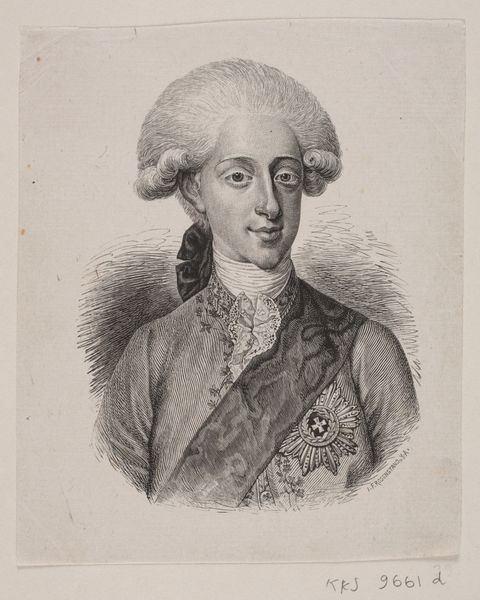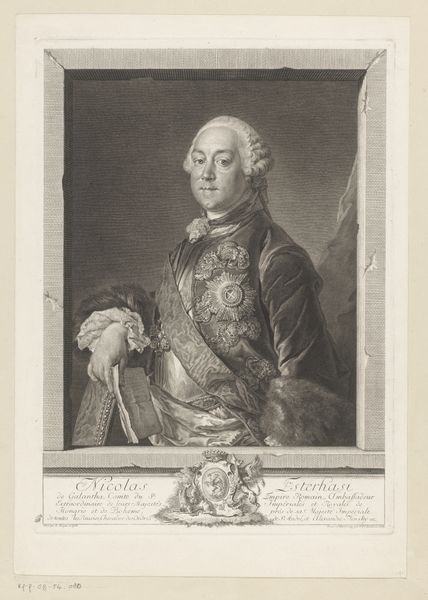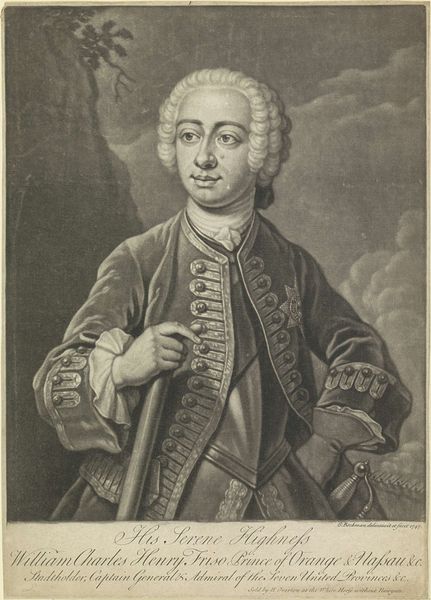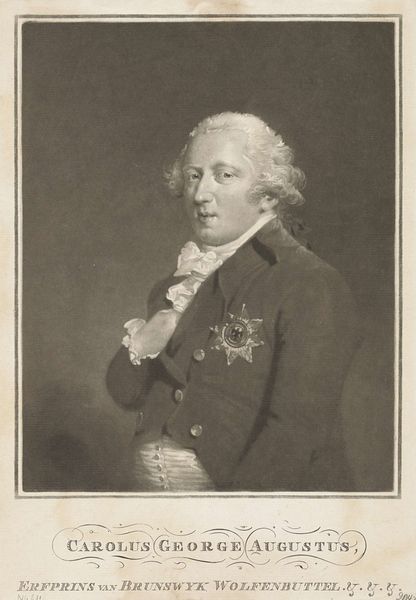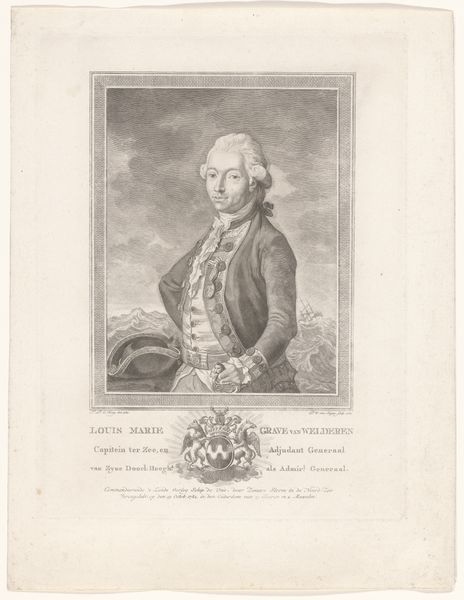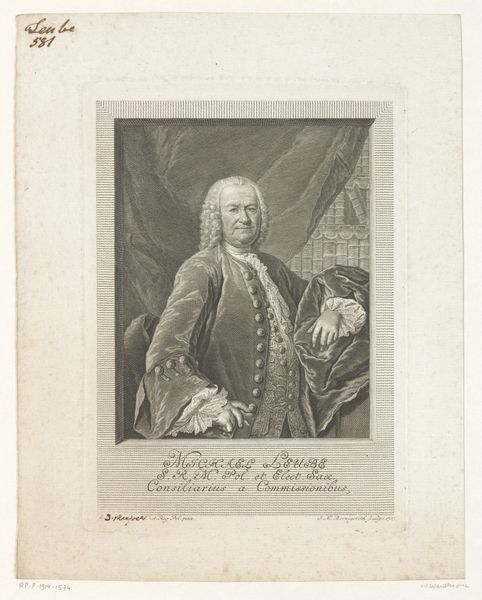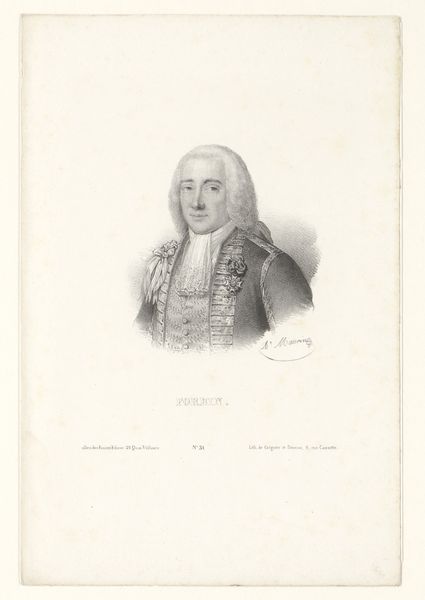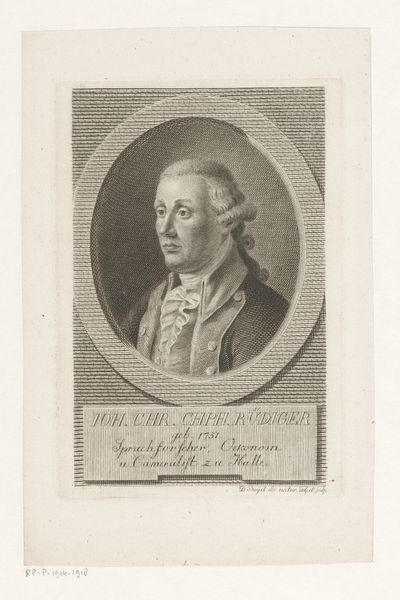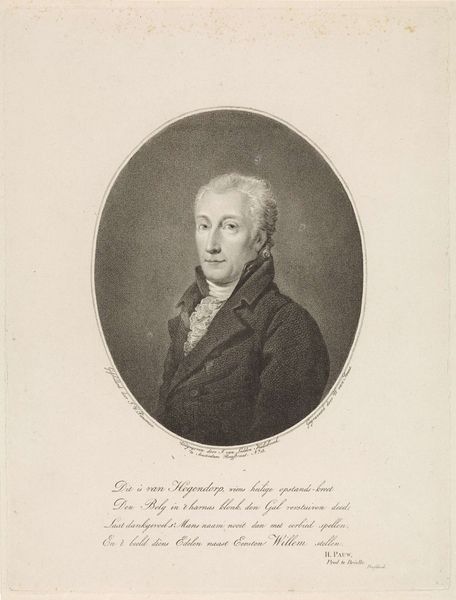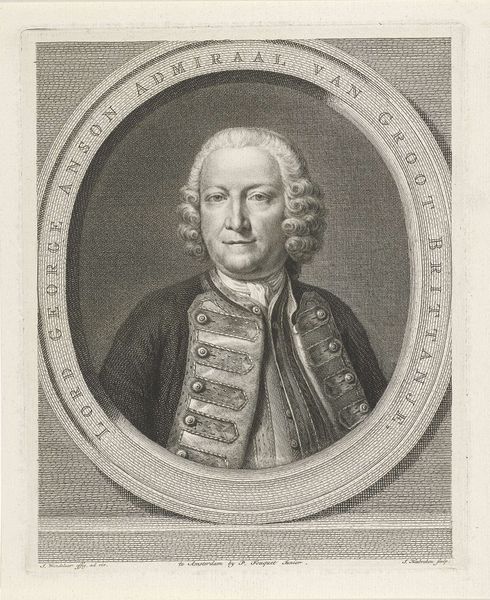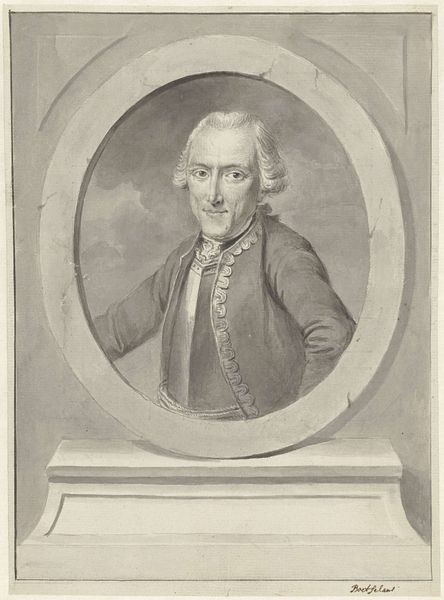
print, engraving
#
portrait
# print
#
portrait reference
#
limited contrast and shading
#
portrait drawing
#
history-painting
#
engraving
Dimensions: height 469 mm, width 368 mm
Copyright: Rijks Museum: Open Domain
Curator: Here we have a portrait of Louis Joseph de Bourbon, attributed to Francesco Bartolozzi. It’s an engraving, possibly created between 1802 and 1811. Editor: My immediate reaction is...restrained. The limited contrast and shading gives it almost an ethereal, detached feel. And there is quite a lot of text, in a relatively small frame. Curator: Engravings, like this one, were interesting technologies. The printmaking process meant multiple identical copies could be produced. It democratized access to imagery, moving portraits out of the exclusive realm of painted canvases for the wealthy. Think of the labor involved – each line carefully incised into the metal plate. Editor: And the context! This image is laden with Bourbon symbolism. Notice the regalia, the strategic landscape in the background hinting at his military career. Images like these helped to construct and disseminate specific political narratives. Who saw these prints? What impact did this have on the revolutionary rhetoric of the period? Curator: The material itself plays a role. The stark black ink against the white paper—its durability, its capacity to reproduce detail. Consider too the engraver’s role, essentially a craftsman translating another artist’s vision into a repeatable form. How much agency did Bartolozzi have, working within these parameters? Editor: Good point. How did the institutions of power commission and distribute prints like these? Where were these images displayed - were these aimed to reinforce power, or to rally people to a cause? The composition guides our eye right to the man, even in this seemingly humble material of the print. Curator: Looking at the details, the way Bartolozzi uses line to define the figure, makes you wonder about his influences, his workshop, his intended audience. What kind of paper stock was standard at the time, and how would its quality have affected the print’s longevity and perceived value? Editor: It really underscores how images function within social and political ecosystems. And considering how printmaking circulated specific images, the political force they had would reach all across Europe, to reinforce ideas or to invite discord. Curator: It offers such insight into the methods through which imagery becomes entangled with concepts of value, access, and political agency, even to this day. Editor: Indeed, a poignant reminder that what we see is rarely ever just what it seems.
Comments
No comments
Be the first to comment and join the conversation on the ultimate creative platform.
